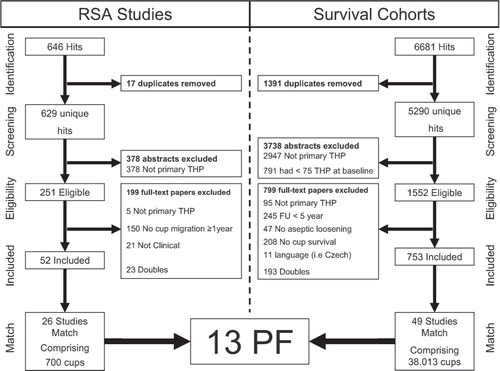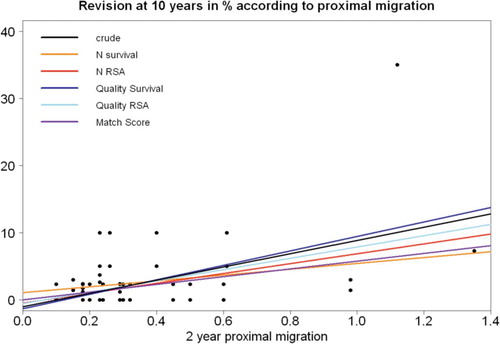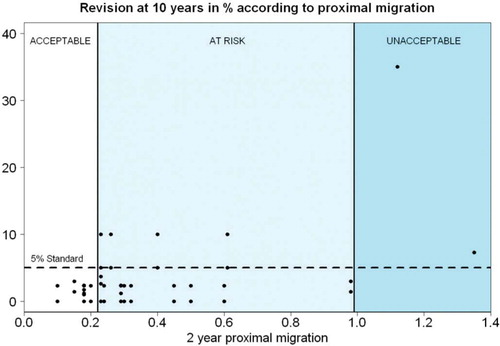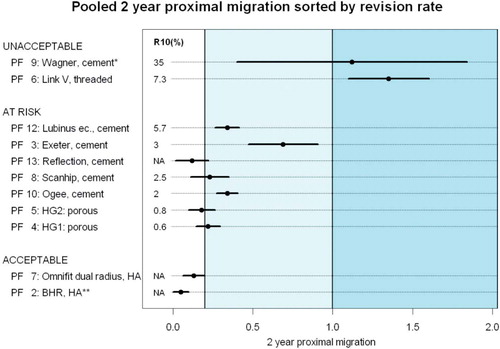Figures & data
Figure 1. PRISMA flow chart of both reviews. Details of the 13 PF can be found in Table 1. RSA: radiostereometric analysis; THP: total hip prosthesis; FU: follow-up; PF: combination of prosthesis type and fixation method.

Table 1. Breakdown of prosthesis types and fixation methods
Figure 2. Scatter plot showing association between 2-year proximal migration in mm and revision rate for aseptic loosening of the acetabular cup at 10 years, as a percentage. The colored lines were derived from weighted regression according to match quality, survival study quality, and RSA study quality (the coefficients and 95% CIs are given in Table 2).

Table 2. Association between 2-year proximal migration and revision rate for aseptic loosening at 10 years a
Figure 3. Scatter plot showing the relation between 2-year proximal migration and revision of the acetabular cup for aseptic loosening at 10 years. The thresholds of 0.2 mm and 1.0 mm for the three categories (acceptable, at risk, and unacceptable) are shown.

Figure 4. Dot chart showing the pooled 2-year proximal migration ranked by the pooled 10-year revision rate for each PF: combination of prosthesis type and fixation method. The unacceptable PFs (based on their migration pattern) have been abandoned, with the Wagner cup having the worst recorded survival in the Swedish Register (Ahnfelt et al. Citation1990). A detailed description of each PF is given in Table 1. R10(%) is the pooled revision rate at 10-year follow-up, in percent; NA: not available.
*This a best-case scenario for the Wagner cup, since the reference scene was not made directly postoperatively. Thus, the actual 2-year proximal migration is more than the observed value presented here.
** The Birmingham Hip Resurface (BHR) prostheses of the RSA study were implanted by the developer, so the migration results (and “acceptable” classification) may not apply to non-developers.
